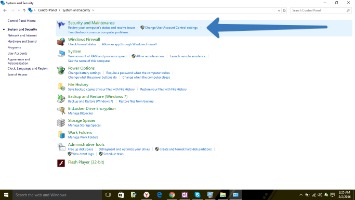13 Dec Full Cycle of the Accounts Payable Process: Ultimate Guide
Content

Full cycle accounts payable, as the name implies, is the complete cycle that an accounts payable department goes through to complete and archive a purchase. From receiving and approving invoices to paying https://kelleysbookkeeping.com/ vendors and suppliers for their goods and services, the AP process is critical to any business. It is part of the procure-to-pay business process and mainly centers around effective invoice management.
Today, bank transfers are made almost exclusively online, and in the case of larger volumes, automated data exchange happens via APIs. Accounts payable stands in contrast to accounts receivable, which records and processes the services provided by a company to its customers or other businesses. The accounts payable department is responsible for accurately tracking what’s owed to suppliers, ensuring payments are properly approved and processing payments.
Next steps to automating your accounts payable process
Within a company, accounts payable is closely linked to purchasing; it includes an overview of external suppliers and service providers, their range of services and types of order processing. In doing so, they record the supplier’s full company name, address, tax code and, if necessary, other data, such as those relating to discounts, payment terms and rebates granted regularly. In this system, invoices are scanned or emailed to a specific address and read by accounting automation software. For instance, a software’s accounts payable management function allows businesses to manage vendor lists, track bills and payables, and make payment without needing to enter detailed debits and credits.
By delivering insights and enabling action, an EMS allows AP organizations to operate at maximum capacity. Process Mining and Execution Management give AP departments the means to overcome these challenges without the cost and disruption of replacing existing hardware and software. Accounts Payable sits within the Procure-to-Pay , sometimes called Purchase-to-Pay, business process after Procurement, also called Purchasing. More broadly, P2P is the second stage of the Source-to-Pay process after Sourcing. The agreement initiates when a supplier agrees to sell its products at the requested terms and conditions. The supplier must send a confirmation of acceptance in writing through post or email.
Ways to Organize Your Accounts Payable Department
Three major elements are typically required for execution within the accounts payable process – the purchase order , receiving report , and vendor invoice. However, PO and receipts are optional and are dependent on how the company runs its business. The AP process is responsible for paying suppliers and vendors for goods and services purchased by the company.
Trade payables fall under accounts payable, and some companies simply combine the two into one accounts payable process. In this case, supplier invoices are recorded as debits for inventory and fixed assets on your company’s balance sheet. Or, they are recorded as expenses on the income statement and the accounts payable entry, adding the supplier invoice as a credit.
Drawbacks of the traditional account payable process
A business can save vital employee time and boost productivity, while investing in the mission of building a better, more successful company. The AP process helps you in monitoring the entire business transaction and if there is any past-due invoice. You can also add your chart of accounts in Microsoft Excel if you are not using an online tool or software.

For example, a company does not issue a purchase order to its electric utility for a pre-established amount of electricity for the following month. The same is true for the telephone, natural gas, sewer and water, freight-in, and so on. An accounts payable team is responsible for collecting invoices, confirming three-way matching, and conveying payment. Due to the number of stakeholders What Is Accounts Payable? What Is The Process And What Is Included? involved, cycle times for purchasing and payment are usually long and riddled with challenges. Some people mistakenly believe that accounts payable refer to the routine expenses of a company’s core operations, however, that is an incorrect interpretation of the term. Expenses are found on the firm’s income statement, while payables are booked as a liability on the balance sheet.

No Comments